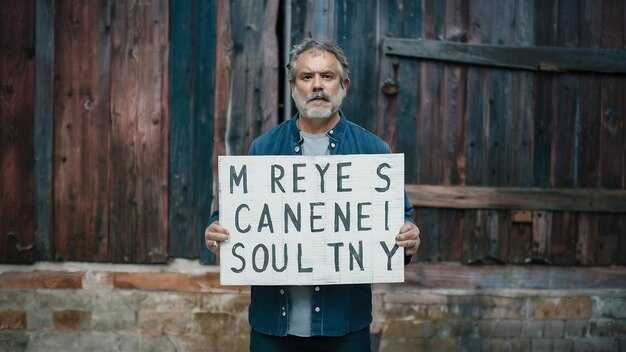There comes a point in every anxious-avoidant pairing when the anxiously attached partner finally breaks — not with loud arguments or pleading, but with a hush so absolute it seems to drain the room of oxygen. For months or even years they weather an emotional tempest: one moment drawn in, the next shoved away; occasional morsels of affection tossed between vast portions of guardedness. They explain the chill, forgive the distance, and reassure themselves that if they love harder, if they try longer, the other person will stay. But the truth gnaws quietly: this isn’t a mutual, nourishing love — it’s endurance. Then, unexpectedly, everything changes. It’s not another tear-streaked collapse or a frantic demand for steadiness. It’s a new kind of clarity — cold, precise, and merciless. When the instinct to preserve their own mental health finally outweighs the pull of attachment, when protecting themselves becomes more urgent than rescuing the relationship, everything shifts. This piece isn’t simply about breakups; it explores the hidden psychological battleground of the anxious partner — the suffering they shoulder, the moment that destroys the comforting illusion, and the silent, permanent exit that leaves the avoidant bewildered. If you’ve ever loved someone who retreated whenever you inched closer, if you poured everything into a person who returned only fragments, this narrative will ring true. Keep reading, because by the end you’ll grasp not only why the anxious partner decides to leave, but why they don’t come back unchanged.
Every anxious-avoidant connection begins with a spark. The anxious partner experiences a magnetic pull, an intense bonding that feels both urgent and tender. The avoidant initially permits just enough intimacy to kindle hope. Thus the pattern starts. One day the avoidant leans in — soft, open, maybe even affectionate — sharing something private, lowering their defenses. The anxious person drinks in the warmth and thinks, “This is real. This is safe.” Then the warmth evaporates. Messages go unanswered. Attentiveness cools. Presence fades like breath in the air. The anxious partner is thrown into a loop of emotional whiplash: drawn close, then shoved away again and again. It’s more than unpredictability; it’s a fragmentation of reality. They begin to question themselves: “Was it something I said? Did I overstep? Are they pulling away or just occupied?” Human minds hunger for patterns, so the anxious partner turns into a sleuth, hunting for meaning in tone, pauses, and silences. Conversations are replayed like evidence. Every nuance is scrutinized, desperate to decipher a riddle.
Clinicians refer to this as the pursuit–withdrawal cycle. The avoidant recoils from intimacy and so withdraws; the anxious dreads abandonment and so pursues; the harder one chases, the faster the other retreats. To the anxious person it reads as rejection — and for someone wired that way, rejection is excruciating. They respond by escalating: more affection, more reassurance, more attempts to fix the inconsistency, praying that steadiness will finally arrive. But steadiness never becomes the norm. Only the same dizzying cadence: nearness, distance, nearness, distance. This emotional seesaw slowly corrodes the anxious partner’s self-worth. They convince themselves, “If I just try harder, I’ll be enough.” Love in this dynamic shifts from joy to survival.
When love becomes painful, the anxious partner rarely walks away. Instead, they rationalize, create explanations, and invent reasons to stay because leaving would mean confronting the terror at the heart of their attachment — abandonment. They tell themselves they’re just stressed, they’ve been hurt before, they need time — or the most dangerous belief of all: my love can heal them. These narratives are not signs of weakness so much as strategies to survive. To preserve the bond at nearly any cost they warp reality, practicing cognitive gymnastics to make opposing truths fit. The avoidant’s behavior screams distance, yet the anxious heart craves closeness; to reconcile these facts the anxious partner rewrites the story until pain feels like proof of devotion. Red flags are minimized. Disrespect becomes the legacy of past wounds. Silence is labeled “space.” Withdrawal is recast as a test of loyalty. In this retelling, the anxious partner becomes both lover and unpaid therapist — endlessly offering reassurance, patience, and forgiveness, pouring out themselves like an ocean while being given only drips in return.
The tragedy is that every justification tightens the noose. Each excuse extends their stay by “just a little longer,” and in doing so they begin to lose the boundary between where they end and the other begins. Love turns into self-erasure. Needs are muted. Boundaries blur. They clutch at the imagined version of who their partner might be rather than confronting who the partner actually is. Rationalizations pile up until the anxious partner bears not only their emotional load but also the burden of forgiving and normalizing someone else’s inability to reciprocate fully. These mental contortions can postpone rupture, but at a steep personal cost: a gradual, corrosive erosion of self.
At first the cost is subtle: sleepless nights staring at the ceiling, obsessively replaying interactions, reading silence as catastrophe. Every delayed reply becomes an emotional storm. The nervous system swings between hope and despair. Then the strain manifests in the body — exhaustion, appetite shifts, headaches, a persistent undercurrent of unease, as if life itself were precarious. When a sense of safety is tethered to someone who continually withdraws, genuine rest is impossible. The deepest injury is psychological: the anxious partner begins to abandon themselves. They silence their own needs to avoid appearing demanding. They hold back from conflict. They stop asking for what they need because it seems safer to accept crumbs. This is emotional starvation in the anxious-avoidant dance.
And yet, still they keep giving. They show up for crises, for rare moments of vulnerability, for any flicker of connection. They shoulder the emotional labor for both, convinced that if they only hold on longer their devotion will eventually be recognized. Instead of appreciation, their efforts become expected; patience morphs into entitlement; forgiveness turns routine. What once felt like love begins to feel like servitude. Clinicians name this self-abandonment: sacrificing one’s well-being in the hope of preserving attachment is not love, it’s survival masquerading as devotion. Survival has limits. No matter how much the anxious partner offers, avoidance walls often remain. The push–pull pattern persists and hope, patience, and emotional resilience dwindle. They begin to see the true cost of this love: their sanity.
Every anxious partner reaches a threshold — a final straw, a breach that shatters the illusion and forces a brutally honest appraisal of the relationship. It may not be dramatic. Sometimes the trigger is small: a phone that never rings when they need help, an empty seat at a meaningful event, a decision made without them as if their feelings don’t matter. In that instant the familiar sting of abandonment hits, but instead of resorting to another rationalization, a different voice rises — colder, firmer, a survival instinct that says: enough. This is not the pleading collapse of old where desperation begged for reassurance. This is unclouded clarity: sharp, merciless, uncompromising.
Suddenly the pattern reveals itself. Months and years of drawing close only to be pushed away repeat over and over. They accepted crumbs while offering feasts of affection. The routine of waiting, explaining, forgiving goes on until one day the truth becomes undeniable: their patience hasn’t mended anything — it has enabled the problem. Their love was not a remedy; it was a prison. Psychologists name this moment the collapse of cognitive dissonance — when the stories we use to soothe ourselves can no longer conceal the reality we’ve been evading. The anxious partner at last sees the situation with brutal clarity, perhaps for the first time. This isn’t mere inconsistency. This isn’t love. This is survival — and survival no longer suffices. The breaking point doesn’t explode in fury or dramatic ultimatums. It arrives softly, almost serenely — not with flame, but with ice. The anxious partner stops asking, “How can I fix this?” and begins to ask, “How can I free myself?” From that instant the relationship has already begun to end, even if no words have been exchanged. A triggering event splits the anxious partner open, and out of that fissure comes a chilling clarity. They look at the bond without the comforting narratives they once relied on and recognize that their unconditional, overflowing giving has become enablement. What once felt like devotion is exposed as self-abandonment. Forgiveness was not nobility but habit. Patience was not strength but a leash. Hope was not a lifeline but a delusion. Psychologists describe this as the collapse of the attachment fantasy — the dismantling of the belief that endless love can heal someone who refuses healing. The anxious partner finally understands they have been fighting for someone who will not fight for them: investing in a person who treats that investment like a burden, loving someone who cannot or will not return the love they need. This clarity arrives quietly and coldly, irrevocable. Once the veil lifts, every meager display of affection looks pitiable, almost insulting. Each withdrawal ceases to be a mystery and reads like contempt. The person who once obsessed over decoding avoidance simply loses interest in decoding anything, because what had seemed like a solvable puzzle now feels like wasted life. This is cold clarity: when love stops feeling like air and starts feeling toxic. In that hush a new, decisive question appears: if this is what love feels like, why am I still here?
When the anxious partner decides to leave, the exit is not theatrical. No slammed doors, no shouting, no last-ditch pleas. It is quiet, nearly invisible, because there is nothing left to give. They stop explaining how the withdrawal wounds them. They stop bargaining for scraps of attention. They stop rehearsing the perfect speech that might finally penetrate. The fight simply drains away and is replaced by a calm resignation that the relationship will never become what they need. Psychologists call this detachment born of exhaustion — the complete depletion of the energy required to sustain a lopsided bond. It begins in small, unobtrusive ways: they no longer chase when the avoidant pulls away; they stop decoding silences or analyzing mixed messages; they stop reshaping their life around someone else’s walls. Instead, the quiet work of disentangling begins. They make plans that do not include the avoidant. They reconnect with friends they had neglected. They reclaim hobbies and passions, parts of themselves buried beneath the weight of waiting. This is not revenge or even rage. It is survival. Once the anxious partner reaches genuine indifference, the dynamic dissolves — the avoidant’s power never lay in distance itself but in how the anxious person reacted to it. When the pursuit ends, so does the avoidant’s control. The silence feels strange and unsettling to others, but to the anxious partner it feels like freedom. With no words spoken, the relationship has already been surrendered emotionally, and soon practically as well; this time, there is no return.
The first sign of change is subtle. The anxious partner doesn’t announce a breakup; they simply stop pouring emotional labor into a relationship that has drained them. No more decoding the quiet. No more recasting the avoidant’s distance as care. No more begging for crumbs when they have been serving full meals of love. This is the start of emotional withdrawal — what psychologists call the conscious reallocation of energy. When someone finally stops pouring themselves into a void and redirects that energy inward, the effect can seem almost imperceptible at first. Physically, they remain present, but the dynamic has shifted. When the avoidant withdraws, there is no chase. Mixed signals are met with no scrutiny. A rare flicker of affection no longer ignites frantic hope; it is received with neutrality. The anxious partner has developed a new kind of immunity. It doesn’t form overnight; it is forged through years of hurt and repetition. Once it exists, avoidance no longer dictates their emotional state. The push-and-pull disintegrates, and in its place the anxious partner begins to rediscover themselves: noticing how much energy they have when they’re not anxiously awaiting a reply; feeling calmer when they stop managing someone else’s emotions; learning to enjoy their own company. What once felt like abandonment becomes space — space to breathe, to heal, to choose themselves. The shift from obsession to indifference, from desperation to neutrality, marks the true beginning of freedom.
Emotional withdrawal is merely the first step. What follows is practical disentanglement. For so long their life orbited the avoidant: plans bent to moods, social calendars shuffled to accommodate absences, dreams postponed in the hope the other would someday be ready. Now they move differently. They make plans without that person — dinners with friends, weekend getaways, daily routines like reading, exercising, cooking — all begin to feel like acts of liberation. Waiting turns into living. Long-abandoned interests — music, art, writing, travel — reemerge like reclaimed treasures; friendships revive. Conversations stop circling obsessively around “What did they really mean?” and instead become about laughing, sharing, and connecting with people who recognize their worth without conditions. Psychologists call this reinvestment in the self: redirecting energy away from a one-sided attachment into activities and relationships that actually fulfill. Gradually, the anxious partner constructs a future that assumes independence — not from bitterness or vindictiveness but from practical necessity. They finally accept that they cannot build a life around someone else’s walls. To the avoidant this change is bewildering. The anxious person isn’t dramatic; they’re simply removing themselves methodically. Clothes stop being left behind in an “avoidance drawer.” Shared routines and little rituals, even the nightly good-night text, dissolve. This is not theater; it is preparation. The anxious partner is assembling a life that can stand on its own — a life where their worth, happiness, and stability are not contingent on another’s ability to be present. Once the disentanglement begins, there is no turning back, because what is being built is freedom.
A remarkable transformation often follows surviving the breaking point and walking through disentanglement: the development of what psychologists call earned security. This is not an absence of fear but a mastery of it. After repeated cycles of hope, disappointment, and release, the anxious partner is compelled to acquire new skills. They learn to self-soothe instead of waiting for a message to steady their racing thoughts: breathing techniques, journaling, movement, and supportive connections become tools of regulation. They erect boundaries where previously they accepted disrespect. They stop pleading for consistency and begin to understand that consistency is not something one should have to beg for. Most crucially, they learn self-worth. For years their value had been tethered to the avoidant’s attention, rising when it came and collapsing when it was withdrawn. Now that external lever is gone; their worth is no longer negotiable. They realize they were not “too much” — they were simply with someone unequipped to handle depth. They were not needy; they were starved. This revelation is revolutionary. Old avoidance strategies stop working: withdrawal no longer provokes frantic pursuit, mixed messages no longer inspire exhaustive analysis, silence no longer triggers panic. Silence is just silence; distance is just distance; what used to sting as abandonment now reads as information — proof that this person cannot or will not love the way they need. That is earned secure attachment: the capacity to remain emotionally steady despite another’s inconsistency. Once the anxious partner reaches this place, they become fundamentally incompatible with the anxious-avoidant choreography — they no longer want chaos, no longer equate pain with passion, no longer accept that love must be earned through suffering. They have discovered a healthier form of love, and once you have felt what healthy love can be, you cannot, in good faith, settle for less.
From the avoidant’s perspective, the anxious partner’s quiet withdrawal initially makes no sense. They are accustomed to a predictable rhythm: withdraw, the other chases; send mixed signals, and the anxious partner decodes them; offer crumbs, receive gratitude as if it were a feast. Now withdrawals meet silence, mixed signals are ignored, the crumbs go untouched. The anxious partner refuses to play their old role, and this unfamiliar response throws the avoidant into confusion. At first they may assume manipulation: “They’re trying to make me jealous; they’ll come back.” So they escalate — withdrawing further to test whether the pursuit will return or suddenly dangling affection to see if hope will reignite. When nothing shifts, panic follows. The avoidant realizes the unthinkable: their control has evaporated. For years their safety depended on the predictability that, no matter how far they pulled, the anxious partner would return. With the cycle broken, their power is gone and desperation begins to seep out. They might reach out more often, send late-night messages, stage grand gestures they once dismissed, reminisce, hint at loneliness, or finally voice tenderness withheld for years. But to someone who has achieved earned security, these moves feel hollow, tactical, too little and too late. Nothing unsettles the avoidant like indifference, because indifference means the anxious partner is not merely angry or waiting — they have truly changed. The avoidant is left amid the ruins of a dynamic they assumed permanent and must finally face the truth: they didn’t lose their partner to another person; they lost them to themselves.
Thus the anxious partner’s arc completes a circle: from the chaos of emotional shock to the freezing clarity of the breaking point, to the quiet departure that rewrites their future. What once masqueraded as love revealed itself as survival; what once felt like abandonment became liberating space. In that space they found the most potent discovery of all — themselves. They no longer chase, beg, or mistake pain for passion. They build boundaries, reclaim self-worth, and attain the rarest treasure: peace. For the avoidant, this is a shock; for the anxious partner, it is liberation, because the true ending is not loss but transformation. If this has been your story, understand this: your breaking point is not failure — it is rebirth. Love should never require you to disappear or to suffer to earn it. Healthy love exists, and it begins with the love you choose to give yourself. This is not the end of your tale but its beginning.


 The Avoidant’s Secret Clock: The Truth About WHEN to Reach Out (Psychology Explained)">
The Avoidant’s Secret Clock: The Truth About WHEN to Reach Out (Psychology Explained)">






 Do THIS and Avoidants Either STEP UP or STEP OUT (5 Boundaries) | Jordan Peterson">
Do THIS and Avoidants Either STEP UP or STEP OUT (5 Boundaries) | Jordan Peterson">
 This Is How Avoidants Test You (It’s Not Rejection, It’s Fear) | Jordan Peterson Motivational Speech">
This Is How Avoidants Test You (It’s Not Rejection, It’s Fear) | Jordan Peterson Motivational Speech">
 The Final Dirty Trick Avoidants Use When You Stop Caring (This Will Hurt) | Jordan Peterson">
The Final Dirty Trick Avoidants Use When You Stop Caring (This Will Hurt) | Jordan Peterson">
 Don’t Let These Attachment Styles Hurt Everyone (4-Video Compilation)">
Don’t Let These Attachment Styles Hurt Everyone (4-Video Compilation)">
 How much PAIN have you BURIED in your Marriage?">
How much PAIN have you BURIED in your Marriage?">